What is Done to Milk in a Latte or Cappuccino: A Clear and Neutral Explanation
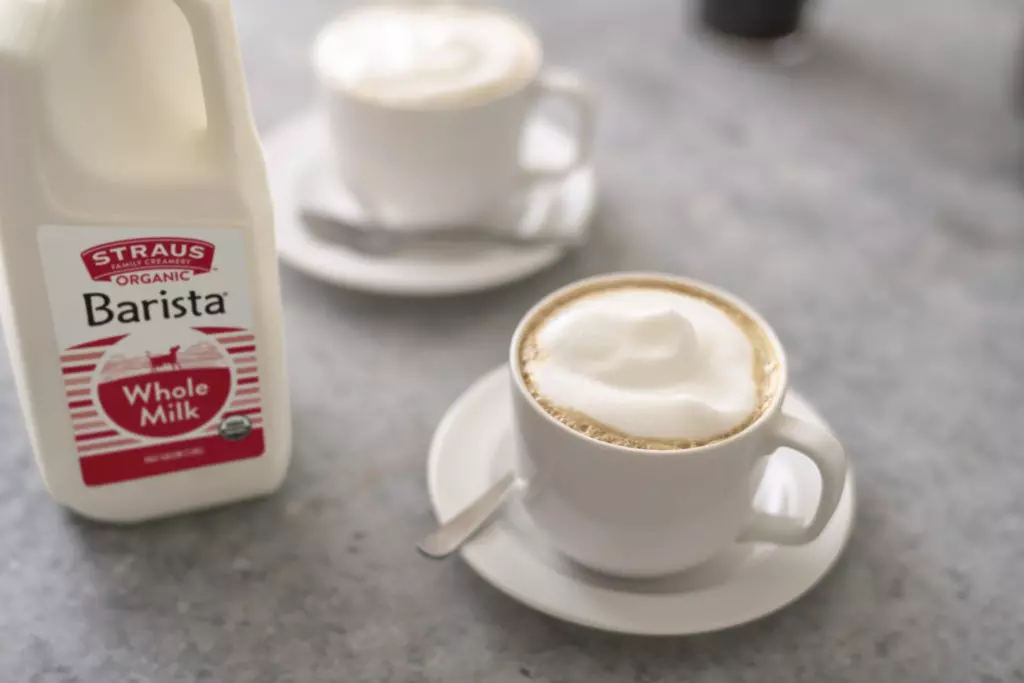
Latte and cappuccino are two of the most popular coffee drinks around the world. Both drinks are made with espresso and milk, but they differ in the amount of milk and foam used. A latte is made with more milk and less foam, while a cappuccino is made with less milk and more foam.
The milk used in lattes and cappuccinos undergoes a process known as steaming. Steaming involves heating the milk to a specific temperature and then using a steam wand to create a frothy texture. The froth created by the steam wand is what gives lattes and cappuccinos their signature creamy texture.
Overall, the process of making a latte or cappuccino involves combining espresso with steamed milk and foam. The amount of milk and foam used in each drink affects the taste and texture. Understanding the process of steaming milk is essential to creating the perfect latte or cappuccino.
Understanding Lattes and Cappuccinos
Lattes and cappuccinos are popular espresso-based drinks that are enjoyed by coffee lovers worldwide. They both contain espresso and milk, but the way the milk is prepared and added to the drink is different.
Lattes
A latte is made up of espresso, steamed milk, and a small layer of milk foam on top. The word “latte” is derived from the Italian caffè latte, which means “milk coffee.” Lattes are typically served in a larger cup than cappuccinos and have a higher ratio of milk to espresso.
To make a latte, two shots of espresso are poured into a cup, and steamed milk is added to fill the cup. The milk is steamed to create a velvety texture and a creamy taste. A small amount of milk foam is then added to the top of the drink. The result is a smooth and creamy coffee with a slightly sweet taste.
Cappuccinos
A cappuccino is made up of equal parts espresso, steamed milk, and milk foam. The word “cappuccino” is derived from the Italian word “cappuccio,” which means “hood.” The drink is named after the Capuchin friars, who wore hoods that resembled the drink’s frothy top.
To make a cappuccino, a shot of espresso is poured into a cup, and steamed milk is added until the cup is about two-thirds full. The remaining third of the cup is filled with milk foam, which is created by steaming milk and then aerating it to create bubbles. The result is a frothy, creamy coffee with a slightly bitter taste.
Differences between Lattes and Cappuccinos
The main difference between lattes and cappuccinos is the ratio of milk to espresso and the amount of milk foam used. Lattes have a higher ratio of milk to espresso and only a small layer of milk foam on top. Cappuccinos have equal parts espresso, steamed milk, and milk foam, resulting in a frothy top.
Another difference is the size of the cup. Lattes are served in larger cups than cappuccinos. This is because lattes have more milk than cappuccinos, which means they take up more space.
In conclusion, lattes and cappuccinos are both delicious espresso-based drinks that are enjoyed by coffee lovers worldwide. They differ in the ratio of milk to espresso, the amount of milk foam used, and the size of the cup. Whether you prefer a smooth and creamy latte or a frothy cappuccino, both drinks are sure to satisfy your coffee cravings.
Key Ingredients
A latte or cappuccino is made up of a few key ingredients that work together to create a delicious and satisfying coffee drink. These ingredients include:
Milk
Milk is one of the main ingredients in a latte or cappuccino. It is used to create a smooth and creamy texture that complements the strong flavor of the coffee. The type of milk used can vary, but whole milk is the most common choice. Some people prefer to use skim or low-fat milk, while others opt for non-dairy alternatives like soy or almond milk.
Foam
Foam is another important component of a latte or cappuccino. It is created by steaming milk and adding air to it, which creates a light and airy texture. The foam is typically added to the top of the drink, creating a layer that helps to insulate the coffee and keep it warm.
Steamed Milk
Steamed milk is another essential ingredient in a latte or cappuccino. It is created by heating milk with steam, which creates a creamy and smooth texture. The steamed milk is then combined with espresso to create the base of the drink.
Espresso Shot
An espresso shot is the foundation of a latte or cappuccino. It is made by forcing hot water through finely ground espresso roast coffee, creating a strong and concentrated coffee flavor. The espresso shot is then combined with steamed milk and foam to create the final drink.
Sugar and Flavors
Sugar and flavors can be added to a latte or cappuccino to enhance the taste. Some people prefer their coffee drinks sweetened with sugar or a flavored syrup, while others prefer to enjoy the natural flavors of the coffee and milk. Popular flavor options include vanilla, caramel, and hazelnut.
Overall, a latte or cappuccino is a delicious and satisfying coffee drink that is made up of a few key ingredients. By using the right milk, foam, and espresso shot, along with any desired flavors or sweeteners, it is easy to create a customized drink that is perfect for any coffee lover.
The Role of Milk
Milk is a crucial component of both lattes and cappuccinos. The milk used in these drinks is usually steamed and frothed, giving the drinks their signature texture and taste.
The type of milk used can vary, but whole milk is the most commonly used type. Whole milk has a higher fat content than other types of milk, which gives the drink a creamier texture and a richer flavor. However, 2% and non-fat milk can also be used to reduce the calorie and fat content of the drink.
In addition to fat, milk also contains protein, which contributes to the overall nutritional value of the drink. The amount of protein in a latte or cappuccino depends on the type of milk used. Dairy milk is the most common type of milk used, but non-dairy alternatives such as oat, almond, and soy milk can also be used. These non-dairy milks have varying amounts of protein, with soy milk having the highest amount.
It’s important to note that the type of milk used can also affect the flavor of the drink. Dairy milk has a distinct flavor that can complement or overpower the flavor of the espresso. Non-dairy milks can have different flavors, with oat milk having a nutty flavor and almond milk having a slightly sweet flavor.
In summary, milk plays a crucial role in the texture, taste, and nutritional value of lattes and cappuccinos. The type of milk used can vary, but whole milk is the most commonly used type. Milk contains fat and protein, which contribute to the overall flavor and nutritional value of the drink. Non-dairy milks can also be used, but they have different flavors and protein content.
The Art of Frothing Milk
Frothing milk is an essential skill for creating a delicious latte or cappuccino. It’s the process of adding air to milk to create a creamy, velvety texture and a thick layer of foam. The art of frothing milk requires practice, patience, and precision. Here are some tips to help you master the art of frothing milk.
Using a Steaming Wand
One of the most common ways to froth milk is by using a steaming wand on an espresso machine. To start, fill a pitcher with cold milk to about a third full. Place the steam wand into the milk and turn on the steam. Keep the wand submerged in the milk and move it around to create a vortex. This will help incorporate air into the milk.
As the milk begins to heat up, lower the pitcher so that the steam wand is just below the surface of the milk. This will create a microfoam, which is a smooth and velvety milk foam. Continue to steam the milk until it reaches the desired temperature, usually between 150°F and 160°F.
Using a Milk Frother
Another option for frothing milk is to use a milk frother. This is a handheld device that creates foam by spinning a whisk inside a container of milk. To use a milk frother, fill the container with cold milk to about a third full. Turn on the frother and move it up and down in the milk to create foam.
Once the milk has reached the desired temperature, turn off the frother and tap the container on a flat surface to remove any large bubbles. Swirl the milk in the container to create a smooth and creamy texture.
Common Mistakes
There are a few common mistakes that can ruin the texture and flavor of frothed milk. These include:
- Overheating the milk, which can cause it to scorch and taste burnt.
- Under-frothing the milk, which can result in a thin layer of foam and a watery texture.
- Over-frothing the milk, which can create large bubbles and a dry, bubbly texture.
To avoid these mistakes, it’s important to pay close attention to the temperature and texture of the milk while frothing. With practice and patience, you can master the art of frothing milk and create delicious lattes and cappuccinos.
The Importance of Ratio and Temperature
When it comes to making a perfect latte or cappuccino, the ratio of espresso to steamed milk is crucial. The ideal ratio of espresso to milk is 1:3 for a latte and 1:1 for a cappuccino. This means that for a latte, you should add three times more steamed milk than espresso, while for a cappuccino, you should add an equal amount of steamed milk and espresso.
The ratio of milk to espresso is essential for creating the perfect balance of flavors in your latte or cappuccino. The espresso provides the bold, rich flavor, while the milk adds a creamy sweetness that complements the espresso. A well-balanced ratio ensures that neither flavor overpowers the other, resulting in a delicious and satisfying drink.
In addition to the ratio, the temperature of the steamed milk is also crucial. The ideal temperature for steamed milk is between 140-150°F. This temperature ensures that the milk is hot enough to create a creamy, smooth texture but not so hot that it burns or scalds the milk.
The temperature of the milk also affects the texture of the foam. Milk that is too hot can create large bubbles, resulting in a frothy texture that is not ideal for latte art. On the other hand, milk that is too cold can create small bubbles, resulting in a dense foam that is difficult to work with.
In summary, the ratio of espresso to steamed milk and the temperature of the milk are crucial factors in creating the perfect latte or cappuccino. A well-balanced ratio ensures that the flavors complement each other, while the ideal temperature of the milk creates a creamy texture and smooth foam. By paying attention to these factors, you can create a delicious and satisfying coffee drink that will impress even the most discerning coffee connoisseurs.
Variations of Lattes and Cappuccinos
Lattes and cappuccinos are two popular espresso-based drinks that are made with steamed milk. While the basic recipe for both drinks is the same, there are many variations that can be made to suit different tastes. Here are some popular variations of lattes and cappuccinos:
Macchiato
A macchiato is a shot of espresso with a small amount of steamed milk added to it. The milk is “stained” with the espresso, which is where the name macchiato comes from (macchiato means “stained” in Italian). This drink is a great option for those who want a strong espresso flavor with just a touch of milk.
Iced Latte
An iced latte is a cold version of a latte. It is made with espresso, cold milk, and ice. This drink is perfect for hot summer days when you want a refreshing pick-me-up.
Pumpkin Spice Latte
A pumpkin spice latte is a seasonal variation of a latte that is popular in the fall. It is made with espresso, milk, pumpkin puree, and a blend of spices, including cinnamon, nutmeg, and clove. This drink is a favorite among those who love the flavors of pumpkin pie.
Flat White
A flat white is a variation of a latte that originated in Australia and New Zealand. It is made with espresso and steamed milk, but the milk is steamed differently than in a latte. The result is a drink that has a velvety texture and a strong espresso flavor.
Wet Cappuccino
A wet cappuccino is a cappuccino that has more steamed milk than foam. This drink is perfect for those who want a little more milk in their cappuccino.
Dry Cappuccino
A dry cappuccino is a cappuccino that has more foam than steamed milk. This drink is perfect for those who want a stronger espresso flavor and a little less milk.
Caffe Latte
A caffe latte is a basic latte made with espresso and steamed milk. This drink is a great option for those who want a simple, classic espresso-based drink.
Overall, lattes and cappuccinos are versatile drinks that can be customized to suit many different tastes. Whether you like your drink with more milk or more foam, there is a variation of a latte or cappuccino that is perfect for you.
Flavor Enhancements
One of the reasons why lattes and cappuccinos are so popular is because they can be customized to suit individual tastes. While the espresso provides the base flavor, milk can be enhanced with a variety of flavors to create a unique and enjoyable beverage. Here are some common flavor enhancements that can be added to a latte or cappuccino:
Flavored Syrups
Flavored syrups are a popular way to add sweetness and flavor to a latte or cappuccino. Vanilla, hazelnut, and mocha are some of the most popular syrup flavors. These syrups are typically added to the milk before it is steamed, so the flavor is evenly distributed throughout the drink.
Chocolate
For those who love chocolate, adding a chocolate flavor to a latte or cappuccino can be a delicious treat. Chocolate can be added in the form of syrup, powder, or even shaved chocolate on top of the foam.
Sugars and Agave
For those who prefer a sweeter drink, adding sugar or agave can be a great way to enhance the flavor of a latte or cappuccino. It’s important to note that adding too much sugar can overpower the flavor of the espresso, so it’s best to add it in moderation.
Other Flavors
In addition to the above flavors, there are many other flavor options that can be added to a latte or cappuccino. Caramel, cinnamon, and pumpkin spice are some popular options that can add a unique twist to the drink. It’s important to note that some flavors may not be available at all coffee shops, so it’s always a good idea to ask before ordering.
Overall, adding flavor enhancements to a latte or cappuccino can be a great way to customize the drink and make it more enjoyable. Whether it’s a classic vanilla syrup or a unique cinnamon twist, there are many options available to suit individual tastes.
Nutritional Content
When it comes to nutritional content, lattes and cappuccinos have some differences. Both drinks use espresso shots as a base, but the amount of milk and foam used in each drink varies.
Calories
A cappuccino typically has fewer calories than a latte because it has less milk. For example, a 12-ounce cappuccino made with whole milk has around 130 calories, while a 12-ounce latte made with whole milk has around 210 calories. Non-fat milk or alternative milks like almond, coconut, or oat milk are also great options for these drinks.
Carbs
Both lattes and cappuccinos contain some carbohydrates from the milk used in the drinks. A 12-ounce latte made with whole milk has around 18 grams of carbs, while a 12-ounce cappuccino made with whole milk has around 9 grams of carbs. Non-fat milk or alternative milks like almond, coconut, or oat milk can also affect the carb content of the drinks.
Content
Lattes and cappuccinos are both made with milk, which provides a source of calcium and vitamin D. However, the amount of milk used in each drink can vary, affecting the nutritional content.
Weight
The weight of a latte or cappuccino can vary depending on the amount of milk and foam used in each drink. A 12-ounce latte made with whole milk typically weighs around 360 grams, while a 12-ounce cappuccino made with whole milk typically weighs around 240 grams. Non-fat milk or alternative milks can also affect the weight of the drinks.
Overall, lattes and cappuccinos can be a part of a balanced diet when consumed in moderation. However, it’s important to be mindful of the nutritional content and opt for non-fat milk or alternative milks if you’re trying to limit your calorie or carb intake.
Making Lattes and Cappuccinos at Home
If you’re a coffee lover, you might want to learn how to make lattes and cappuccinos at home. You don’t need to be a home barista or have an expensive espresso machine to do so. With a few tools and ingredients, you can make delicious lattes and cappuccinos in the comfort of your own kitchen.
Recipe
To make a latte or cappuccino, you need to start with a shot of espresso. You can make espresso using an espresso machine or a French press. If you don’t have either of these, you can use strong black coffee as a substitute.
Once you have your espresso, you need to add a layer of steamed milk. To steam milk, you can use a milk frother or a saucepan. For a latte, you need to add more steamed milk than foam, while for a cappuccino, you need to add equal parts of steamed milk, foam, and espresso.
Tools
To make lattes and cappuccinos at home, you need a few tools. These include an espresso machine, a milk frother, a French press, or a saucepan. You also need a coffee mug, a spoon, and a thermometer to measure the milk’s temperature.
Coffee Shop
If you want to make lattes and cappuccinos like a coffee shop, you need to focus on the texture of the milk. The key to a good latte or cappuccino is a creamy texture. To achieve this, you need to froth the milk properly. Make sure to froth the milk until it’s smooth and creamy.
Conclusion
Making lattes and cappuccinos at home is easy and fun. With a few tools and ingredients, you can create a delicious and creamy coffee drink. Whether you’re a home barista or just a coffee lover, you can enjoy a latte or cappuccino in the comfort of your own home.
The Role of a Barista
A skilled barista is an essential component in crafting a perfect latte or cappuccino. They are responsible for creating the perfect texture and temperature of the milk, which is crucial for the overall taste and appearance of the drink. The role of a barista is not just to make a drink but to create a work of art that will be enjoyed by the customer.
One of the most important skills that a barista must possess is the ability to steam milk correctly. Steaming milk involves heating the milk and adding air to it, creating a creamy and frothy texture. The barista must ensure that the milk is not overheated, which can result in a burnt taste and a loss of sweetness. They must also ensure that the milk is not under-heated, which can result in a flat and lifeless drink.
The barista must also be knowledgeable about the type of milk that is used in the latte or cappuccino. Different types of milk have different fat contents, which can affect the texture and taste of the drink. For example, whole milk produces a creamier and richer texture, while skim milk produces a lighter and less creamy texture. Some customers may also request non-dairy milk options, such as almond or soy milk, which require different techniques to steam correctly.
In addition to steaming the milk, the barista must also be skilled in pouring the milk into the espresso shot to create latte art. Latte art is the process of creating designs and patterns on the surface of the drink using the milk. This not only adds a visual element to the drink but also requires a steady hand and a precise technique.
Overall, the role of a barista is crucial in creating the perfect latte or cappuccino. Their knowledge, skill, and attention to detail are essential in crafting a drink that not only tastes great but also looks great.
Frequently Asked Questions
What is the difference between a latte and a cappuccino?
A latte is a coffee drink made with espresso and steamed milk, while a cappuccino is made with equal parts of espresso, steamed milk, and milk foam. The foam in a cappuccino is thicker and drier than the foam in a latte.
How much milk is in a latte?
A latte typically has about 8-10 ounces of steamed milk, which is mixed with a shot or two of espresso.
How do you froth milk for lattes?
To froth milk for lattes, start by pouring cold milk into a frothing pitcher. Place the steam wand of your espresso machine into the milk, and turn on the steam. Move the wand up and down until the milk is frothed to your desired consistency.
What is the process for making a latte or cappuccino?
To make a latte, start by pulling a shot or two of espresso into a cup. Then, steam and froth milk in a frothing pitcher, and pour the steamed milk into the cup with the espresso. Finish by spooning some of the frothed milk on top.
To make a cappuccino, start by pulling a shot or two of espresso into a cup. Then, steam and froth equal parts of milk and milk foam in a frothing pitcher, and pour the mixture into the cup with the espresso.
What is the difference between a cappuccino and a flat white?
A cappuccino is made with equal parts of espresso, steamed milk, and milk foam, while a flat white is made with espresso and steamed milk, but no foam. The milk in a flat white is smoother and creamier than the milk in a cappuccino.
Which is stronger: a latte or a cappuccino?
A cappuccino is generally considered to be stronger than a latte, because it has a higher concentration of espresso. However, the amount of caffeine in each drink can vary depending on how many shots of espresso are used.
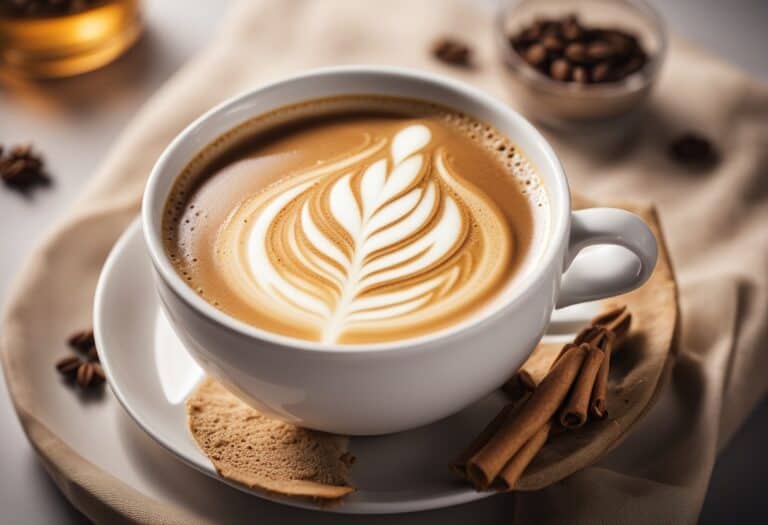
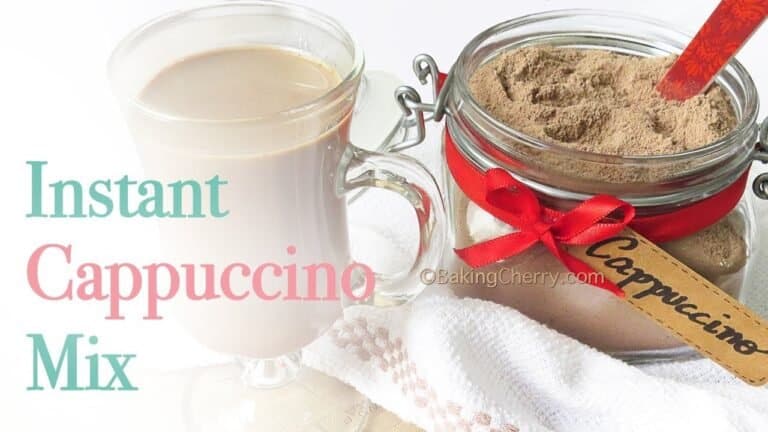

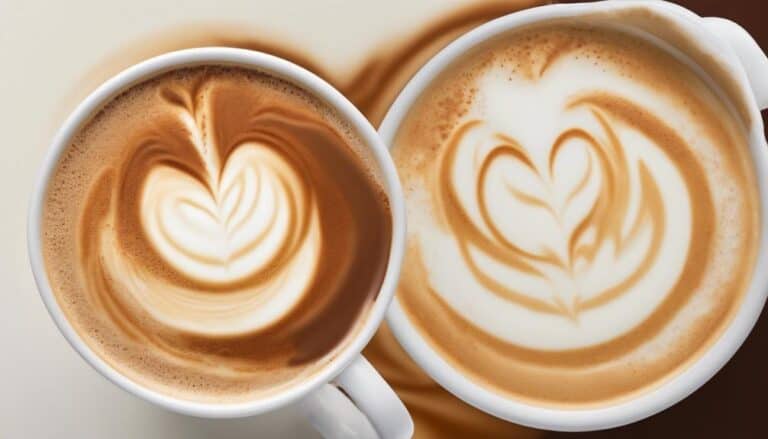

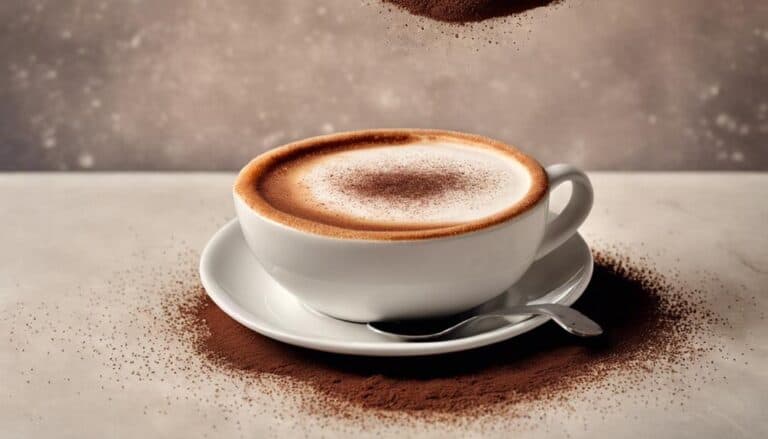
One Comment